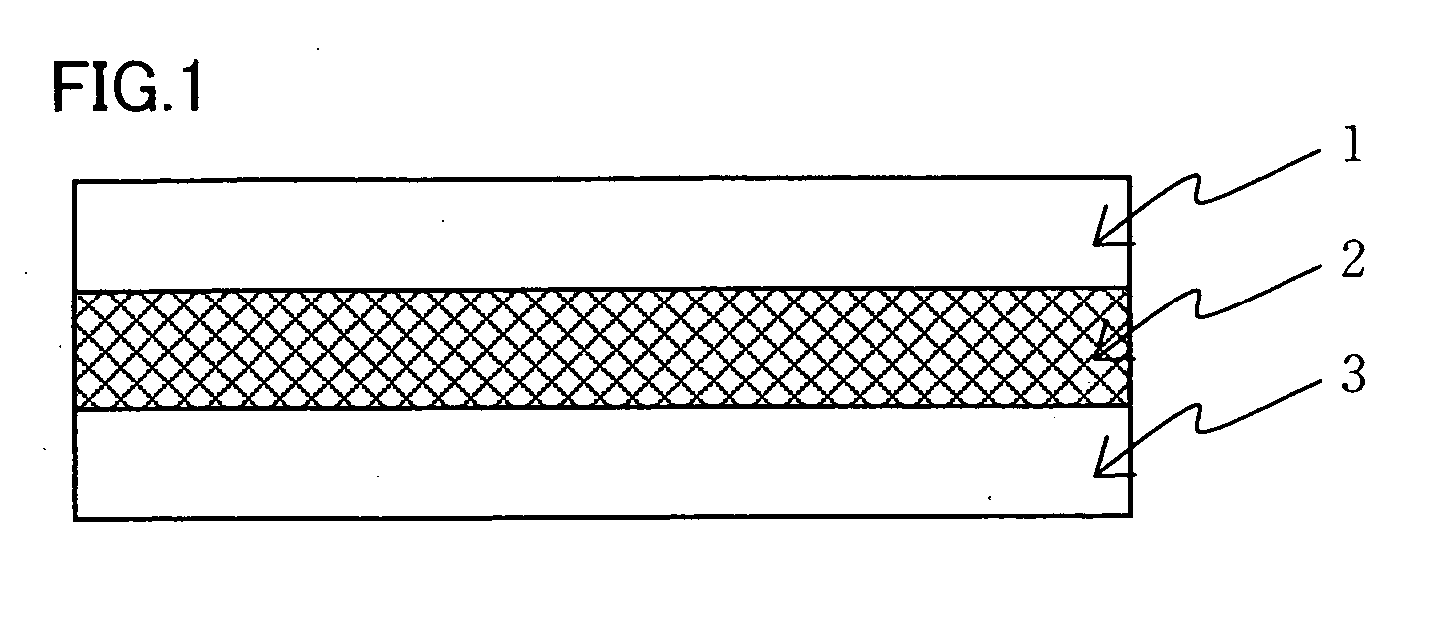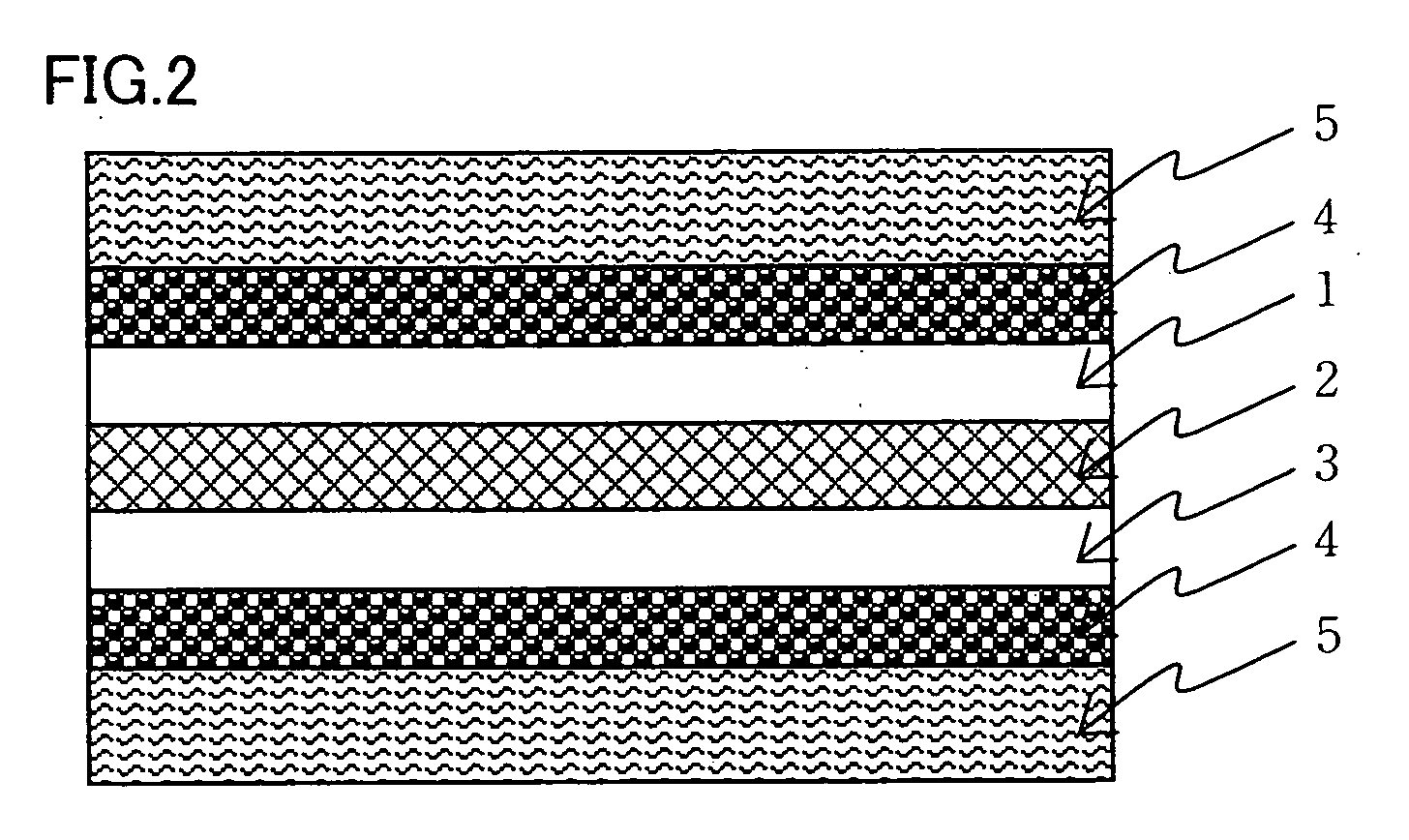Cluster ion exchange membrane and electrolyte membrane electrode connection body
- Summary
- Abstract
- Description
- Claims
- Application Information
AI Technical Summary
Benefits of technology
Problems solved by technology
Method used
Image
Examples
example 1
[0107] An isotropic solution with a poly(p-phenylene-cis-benzobisoxazole) concentration of 1% by weight was prepared. by diluting a dope comprising polyphosphoric acid containing 14% by weight of poly(p-phenylene-cis-benzobisoxazole) polymer having IV=24 dL / g by addition of methane sulfonic acid. This solution was formed into a film on a glass plate heated to 90° C. at a film formation rate of 5 mm / sec using an applicator with a clearance of 300 μm. The thus obtained dope film was solidified on the glass plate used in the film formation in a thermohygrostat at 25° C. and 80% RH for one hour and then was washed with water until the washings exhibited pH 7±0.5, yielding a support membrane. The structural observation of the resulting support membrane confirmed that it was a porous membrane with continuous pores having openings in both surfaces of the membrane. The support membrane was fixed in a stainless steel frame in water and the water contained in the support membrane was displace...
example 2
[0108] A composite ion exchange membrane of Example 2 was prepared in the same way as that described in Example 1 except that the rinsed support membrane was fixed in a stainless steel frame and then was immersed in a 10% Nafion (commercial name) solution (product number: SE-10192) manufactured by Du Pont without displacing the water in the support membrane.
example 3
[0109] A composite ion exchange membrane of Example 3 was prepared in the same way as that described in Example 1 except that the heat treatment temperature was changed to 130° C.
PUM
| Property | Measurement | Unit |
|---|---|---|
| Temperature | aaaaa | aaaaa |
| Temperature | aaaaa | aaaaa |
| Fraction | aaaaa | aaaaa |
Abstract
Description
Claims
Application Information
 Login to View More
Login to View More - R&D
- Intellectual Property
- Life Sciences
- Materials
- Tech Scout
- Unparalleled Data Quality
- Higher Quality Content
- 60% Fewer Hallucinations
Browse by: Latest US Patents, China's latest patents, Technical Efficacy Thesaurus, Application Domain, Technology Topic, Popular Technical Reports.
© 2025 PatSnap. All rights reserved.Legal|Privacy policy|Modern Slavery Act Transparency Statement|Sitemap|About US| Contact US: help@patsnap.com



